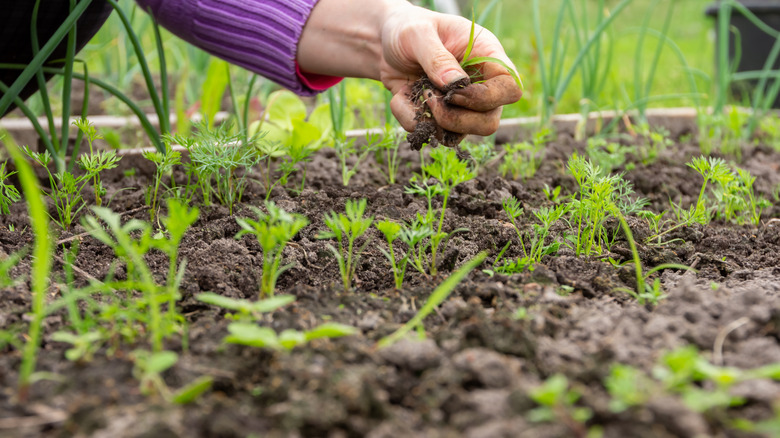Fill Your Herb Garden With Flavorful Dill Using This Easy Propagation Method
It may not be possible to create matter from nothing, but it might seem that way if you learn how to grow dill by propagation using cuttings.
Asexual propagation is a method of growing new plants from the ones you already have by cutting off a healthy piece and nurturing it until it has roots of its own. Rather than collecting seeds or purchasing new seeds to plant, you are simply taking a piece of a parent plant and encouraging it to grow into a whole new plant. This may feel like money-saving magic — and it can also save time over planting from seed, because you're skipping past the germination and sprouting stages.
One great plant to propagate is dill (Anethum graveolens), an incredibly versatile herb. Dill is in the Apiaceae family with brethren such as carrots, celery, and parsley. Whether grown indoors in a container or in your outdoor garden, dill has many uses: as a fragrant and flavorful herb for cooking or eating raw, as seeds for pickling, or — when in bloom — as a pretty pop of yellow in flower bouquets. Dill also grows well in all of the hardiness zones in the U.S. as long as it's planted after the last frost. When dill is propagated from another plant, you can have an endless bountiful harvest without spending extra money.
The best way to propogate dill from cuttings
In order to propagate dill, you'll need a healthy, mature plant that's growing well. First, grab a sharp knife or a pair of kitchen shears and be sure they're clean or even sterilized. This will prevent bacteria or diseases from spreading from plant to plant. Then, cut or snip at least four inches off of the end of a healthy, green dill stem that shows no signs of distress. Next, remove the leaves on the lower part of the cutting so that there's some exposed stem. You can then place the new cutting in a container filled with soil or water.
Water propagation is the fastest method and has the added benefit of allowing you to easily see the new roots growing. Soil propagation also works well if you would rather transfer your cutting to a planter filled with damp, well-draining, slightly acidic soil. Place your new plant in an area with indirect sunlight that's no warmer than 75 degrees. If you planted in water, you will need to change the water every few days and you should see some new roots begin to form within a week. If you planted in soil, keep it moist but not waterlogged. It may take about two weeks for your new plant to show new root growth. In either scenario, your new plant may need longer to establish a healthy root system before being transferred outdoors.
What's the big dill? More benefits of growing this herb in your garden
In addition to dill's versatility in the kitchen, it's also a helpful herb to have in your herb garden or vegetable garden. Dill naturally wards off bugs that eat your plants such as aphids, spider mites, and little bright green caterpillars called cabbage loopers. It also attracts beneficial pollinators like bees, ladybugs, and butterflies. Planting dill near other plants such as lettuce, cucumbers, and asparagus can be beneficial to both parties. However, it's not recommended to grow dill near carrots. Although they taste amazing together as a side dish, they could cross-pollinate, blocking the carrots from achieving their full potential and altering the taste of both crops.
Dill is also high in vitamins A and C and contains healthy minerals such as calcium and iron. In fact, dill is considered so healthy that in ancient times, gladiators would eat it before battle because they believed it bolstered their strength and improved their confidence. Now that's a big dill!


